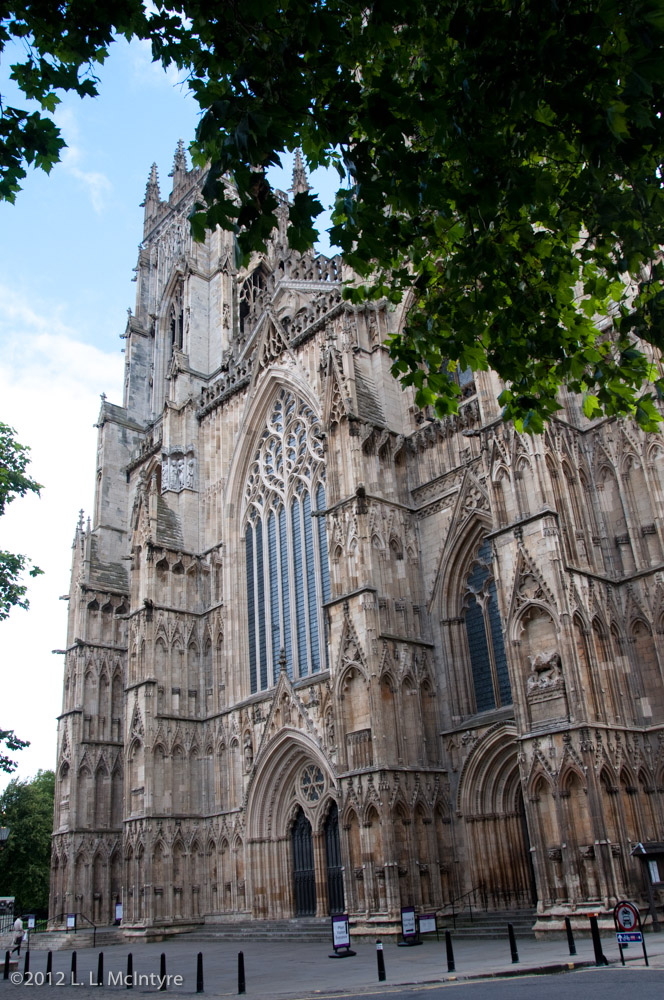Prompted by Will’s question from yesterday, I’ve decided today to try to explain the difference between a minster and a cathedral. I thought this would be a 2-sentence post. However, it’s not that simple a question, as it turns out.
But I should first point out a mistake in yesterday’s post. I clearly didn’t pay attention when I was typing it up. I was very focused on not calling that big church in Ulm a cathedral, and also trying hard not to mistype “minster” (which is a type of church) for “minister” (which is a type of clergyman). As a result, I didn’t notice that I mistakenly said the Ulm church was a Catholic church. It’s not – it became a Lutheran church during the Reformation.
OK, so now that we’ve gotten that out-of-the-way, what is the difference between a “minster” and a “cathedral”?
Here’s what the Wikipedia entry says for the Ulm Cathedral:
Ulm Minster (German: Ulmer Münster, literally: minster) is a Lutheran church located in Ulm, Germany. Although sometimes referred to as Ulm Cathedral because of its great size, the church is not a cathedral as it has never been the seat of a bishop.
OK, well, that makes sense if you look at the definition of cathedral in Wikipedia:
A cathedral (French cathédrale from Latin. cathedra, “seat” from the Greek kathedra (καθέδρα), seat, bench, from kata “down” + hedra seat, base, chair) is a Christian church which contains the seat of a bishop…
Cathedral = a church that is a seat of a bishop. Check. Therefore, one can conclude that a Minister is always a church that is NOT designated as the seat of a bishop, right?
Let’s test this generalization with a church I visited last September, the York Minster in England:
Wait a minute. I went on a guided tour at the York Minster last September, and I clearly remember the guide talking about the Archbishop of York being based at the York Minster. But if there’s a bishop, that should make it a cathedral, and not a minster.
Time to consult the entry for York Minster in Wikipedia:
York Minster is a cathedral in York, England, and is one of the largest of its kind in Northern Europe. The minster is the seat of the Archbishop of York, the second-highest office of the Church of England and is the cathedral for the Diocese of York;….
Hang on. That description defines the York Minster as a cathedral. Hmm, curiouser and curiouser. So the York Minster is both a minster and a cathedral? Being one apparently doesn’t preclude also being the other, and getting a bishop attached to a church doesn’t automatically make that church NOT a minster? Who knew.
Except, it turns out that this is only the case if the minster in question is in England. Turning to Wikipedia one more time, here’s a quote from the entry defining minster:
Eventually a minster came to refer more generally to “any large or important church, especially a collegiate or cathedral church”. In the 21st century, the Church of England has designated additional minsters by bestowing the status on existing parish churches.
So, apparently the Church of England started to use minster to apply more generally as an honorific, and not indicative of the size of the church, etc. So maybe in England, then, a minster is a church that may or may not have a bishop. A bishop, then, can be assigned to either a cathedral or a minster, in the Church of England.
OK, good, so, we’ve cleared that up.
Except … it turns out the York Minster isn’t really a minster at all. While it may have started life that way, the official name now is actually “The Cathedral and Metropolitical Church of St Peter in York”. At least that’s what it says in the Wikipedia entry for York Minster. And why isn’t it really a minster any more? Well, because it has a bishop -— and having a bishop, of course, means it has to be called a cathedral.
But of course, when tourism in your town has for centuries been based around calling your big Gothic tourist-magnet of a church a minster, you’re going to continue to call it a minster, bishop or no.
At least that’s what I think. It doesn’t actually say that in Wikipedia. 😉


I’m so glad I asked. This actually answers many questions, not least the correct spelling of “minster” and the origin of the name Westminster Abbey. Thank you!
And, thanks to your post, my newly acquired word for the day: metropolitical! Love it.
Thanks for the comments – glad to have contributed so many bits of helpful information today. 😉 @Will, your comment about Westminster Abbey got me to read about it – and I discovered a new (to me) church type: that of the Royal Peculiar – it’s technically what Westminster Abbey is. http://en.wikipedia.org/wiki/Royal_Peculiar
I’d like to say how odd that term is, but of course that seems self-evident, no? 😉